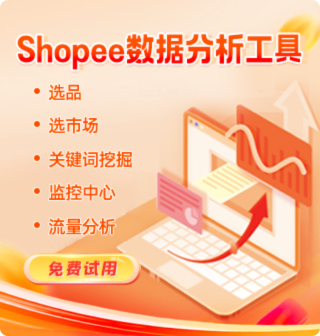-
用户130****4782
Understanding Shopee Logistics: A Detailed Guide for Sellers and Buyers
As one of Southeast Asia’s largest e-commerce platforms, Shopee’s success heavily relies on an efficient and reliable logistics system. Logistics is a fundamental pillar in e-commerce that directly impacts customer satisfaction, seller reputation, and overall marketplace efficiency. In this article, we will explore Shopee’s logistics ecosystem in detail, discuss how it operates, and offer practical insights for sellers and buyers to navigate the logistics landscape effectively.
1. Overview of Shopee Logistics
Shopee’s logistics infrastructure encompasses warehousing, shipping, last-mile delivery, and returns management. It combines partnerships with local courier companies and in-house logistics solutions to facilitate fast, cost-effective, and reliable deliveries across multiple countries including Malaysia, Singapore, Indonesia, Thailand, Taiwan, and more.
Key elements of Shopee logistics include:
Shopee Xpress (SPX): Shopee’s own logistics arm operating in selected markets to ensure dedicated service quality.
Third-Party Couriers: Shopee partners with numerous local and regional courier companies such as Pos Malaysia, Ninja Van, J&T Express, GDEX, and more.
Fulfillment Centers: Warehouses used for inventory storage and order processing, supporting services like Shopee Fulfillment by Shopee (FBS).
2. How Shopee Logistics Works for Sellers
a) Order Fulfillment Process
Once an order is placed, the seller receives a notification and is responsible for preparing the package for shipment. Shopee provides tools to print shipping labels and packing slips directly from the Seller Center.
b) Shipping Options
Sellers can choose from multiple shipping methods depending on their location and preferences:
Standard Shipping: Hand over packages to Shopee’s courier partners for delivery.
Shopee Express: Faster shipping services with guaranteed timelines and tracking.
Self-Collection: Some buyers choose to pick up items from designated points or convenience stores.
Dropshipping and Cross-Border: Sellers can ship directly from overseas or use Shopee’s cross-border solutions.
c) Handling Time and SLA
Shopee enforces strict handling time limits (usually 1-3 days depending on the market), requiring sellers to ship orders promptly. Delays can affect seller ratings and eligibility for certain promotions.
3. Shopee Fulfillment by Shopee (FBS)
FBS is Shopee’s warehousing and fulfillment service. Sellers send their inventory to Shopee’s fulfillment centers, and Shopee handles storage, packing, and shipping.
Advantages of FBS:
Faster Delivery: Orders are shipped from local warehouses, significantly reducing delivery time.
Improved Customer Experience: Reliable shipping and tracking increase buyer confidence.
Simplified Logistics: Sellers save time and effort managing shipments.
Access to Shopee Campaigns: FBS users often get priority in sales events and promotions.
For sellers with high volume or multiple SKUs, FBS can be a game-changer in scaling operations smoothly.
4. Buyer Experience and Logistics
From the buyer’s perspective, Shopee logistics aims to provide convenience and transparency:
Real-Time Tracking: Buyers can see their order status, including dispatch, transit, and delivery updates.
Flexible Delivery Options: These include home delivery, parcel lockers, or pick-up from convenience stores.
Cash on Delivery (COD): Available in many markets, COD builds trust, especially for first-time online buyers.
Customer Support: Shopee offers help with delivery issues like delays, lost parcels, or returns.
5. Common Logistics Challenges and How to Overcome Them
a) Delays and Unexpected Disruptions
Factors like public holidays, weather, or pandemics can cause delays. Sellers should proactively communicate with buyers and adjust shipping expectations during peak seasons.
b) Lost or Damaged Parcels
Packaging quality is crucial. Use sturdy boxes and proper cushioning. Report any issues promptly through Shopee’s dispute system.
c) Address Accuracy
Incorrect or incomplete addresses lead to failed deliveries. Encourage buyers to double-check their details before checkout.
d) Managing Returns and Refunds
Shopee’s return policies vary by market and product category. Sellers must understand and comply with these policies, ensuring smooth processing to maintain good ratings.
6. Practical Tips for Sellers to Optimize Logistics
Choose the Right Courier: Compare pricing, delivery speed, and reliability. Consider customer preferences for certain couriers.
Use Shopee Shipping Tools: Automate label printing and tracking updates to save time and reduce errors.
Prepare for Peak Seasons: Increase stock and shipping capacity ahead of major sales events like 11.11 or 12.12.
Leverage FBS if Possible: For sellers with sufficient volume, FBS can greatly enhance efficiency.
Communicate Clearly: Keep buyers informed about shipping timelines and any potential delays.
7. Future Trends in Shopee Logistics
Shopee continues to invest in technology and infrastructure to further improve logistics:
AI and Data Analytics: Optimizing route planning, demand forecasting, and inventory management.
Sustainability Initiatives: Encouraging eco-friendly packaging and exploring electric vehicles for delivery.
Expansion of Fulfillment Centers: Building more warehouses closer to high-demand areas to speed up delivery.
Integration with Social Commerce: Seamless logistics support for live selling and influencer-driven sales.
Conclusion
Shopee logistics is a complex but well-structured ecosystem that plays a pivotal role in the platform’s success. For sellers, understanding how to navigate this system—from selecting couriers to leveraging fulfillment services—can greatly impact operational efficiency and customer satisfaction. Buyers benefit from Shopee’s commitment to transparency, convenience, and reliability in delivery.
By keeping abreast of best practices, anticipating challenges, and utilizing Shopee’s logistics innovations, both sellers and buyers can enjoy a smoother and more rewarding e-commerce experience.

